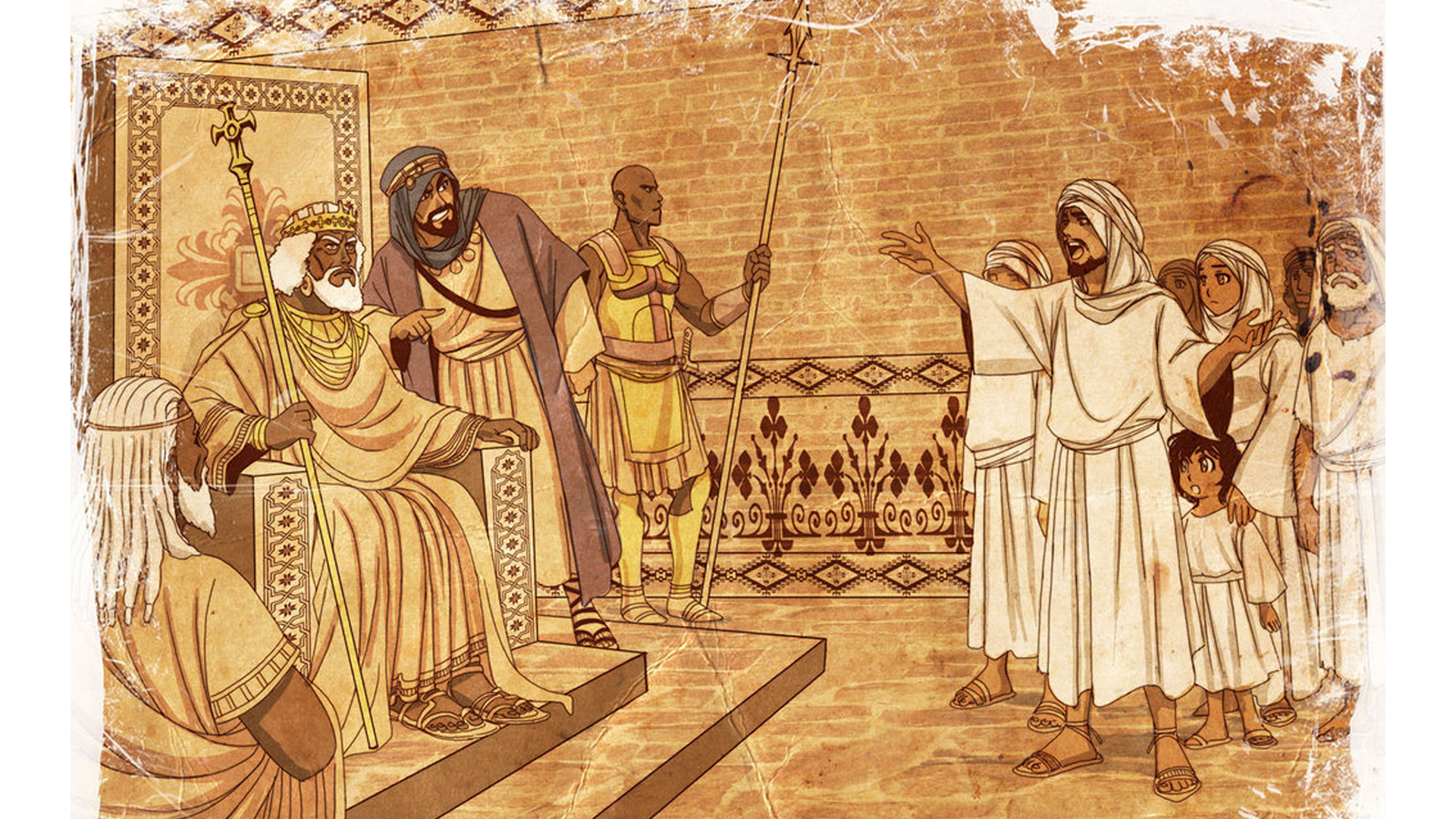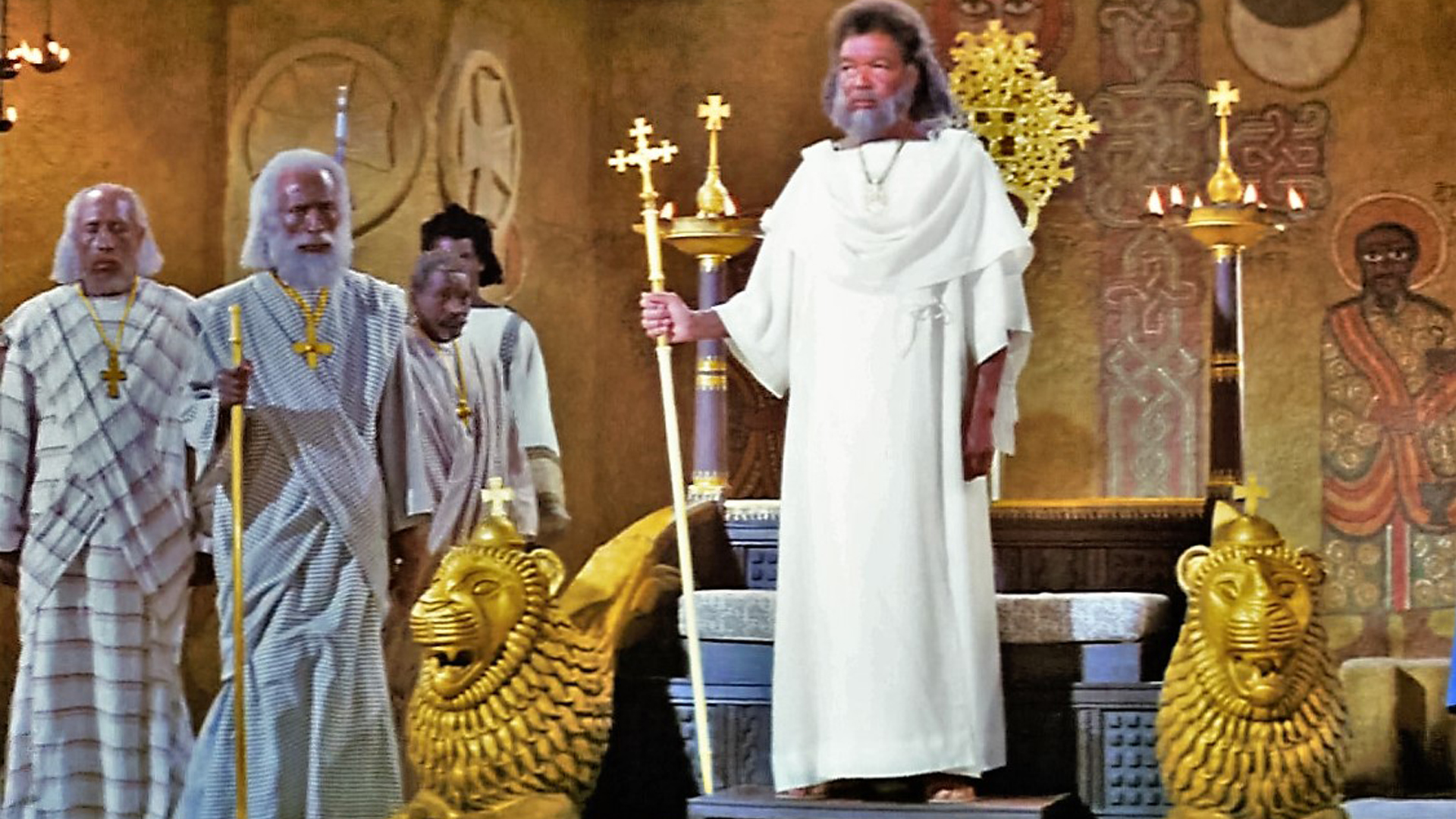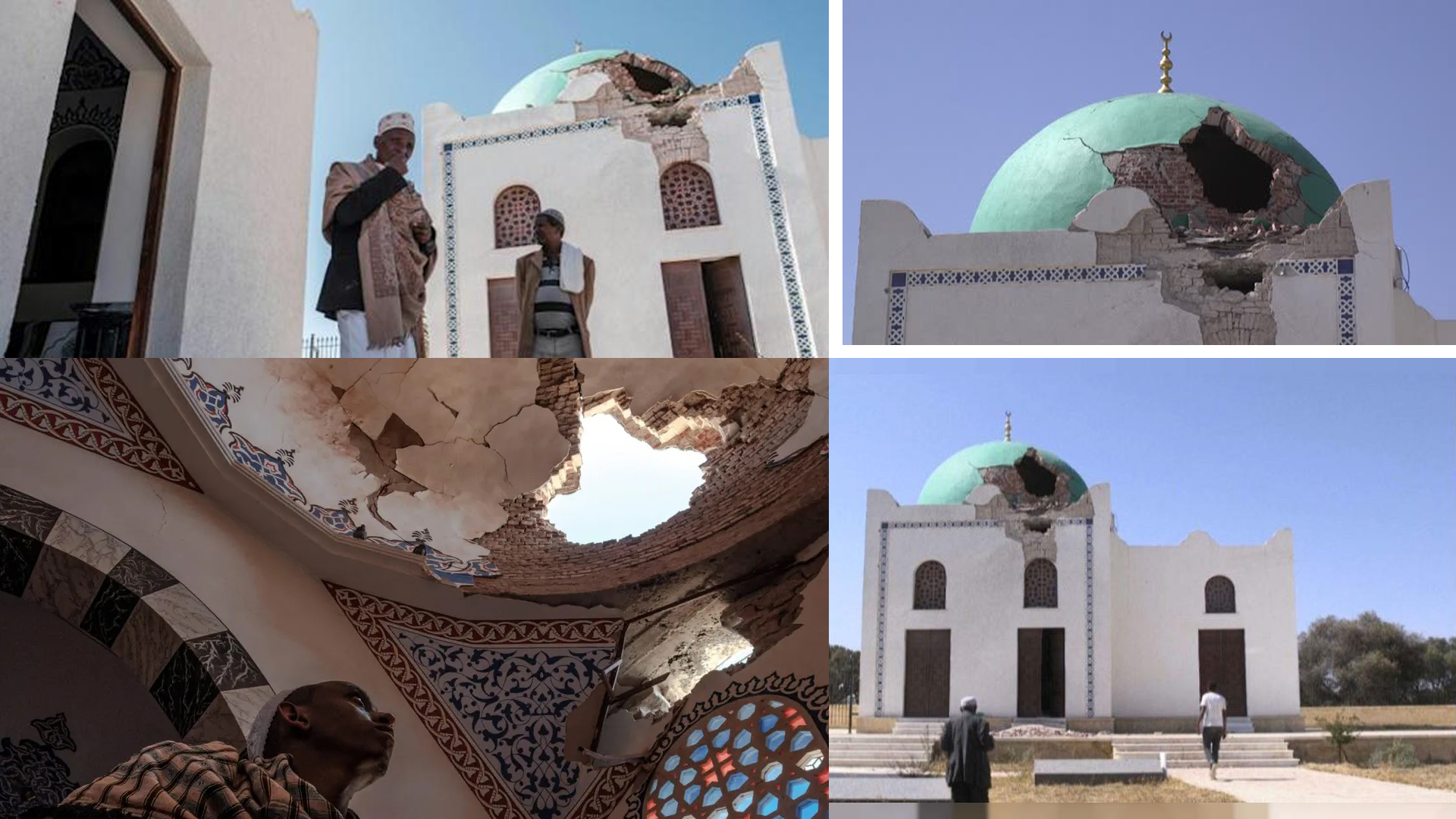It was a very critical moment. Jafar ibn Abi Taleb, the elder brother of Ali ibn Abi Taleb, who after embracing Islam escaped the prosecution of Makkans and led a delegation of over 80 emigrants to Habesha, was standing in the court of Christian King Negash to defend Islam. He had full faith in Almighty Allah and so he spoke fearlessly.

According to Arabic sources, Aṣḥama ibn Abjar was Emperor or al-Najashi (Arabic: النجاشي al-Najāshī) of Axum at the time of Muhammad and gave refuge to several Muslims in the Kingdom of Axum. The term “al-Najashi” has the variant al-Negashi; it corresponds to the ancient Axumite title Negus, with the variant Negash. The name “Ashama” seems to correspond to the original Ge’ez name Ella-Seham, variant Sahama. This is an Axumite king known from coinage. According to other authors, Ashama may have been the same person as king Armah, or his father or son. His tomb is located in the small town of Negash, where he is known as Ashamat al-Negashi.
If you were to go to Abyssinia (Al Habesha), it would be better for you. The king will not tolerate injustice and it’s a LAND OF TRUTH. Go there till Allah relieves you from your distress. (0:51′ – 1:09′, in the video above)
After the second emigration of Muslims to Habesha (Abyssinia), Abu Jahl and Abu Sufyan, the two warlords of pagans of Makkah, sent a delegation to Najashi asking him to expel the Muslims. The delegation brought many precious gifts for the king and his courtiers. They presented their claim in the court saying:
“O king, there is a group of evil persons from among our youth who have escaped to your kingdom. They practice a religion, that neither we, nor you know. They have forsaken our religion and have not embraced your religion. The respected leaders of their people — from among their own parents and uncles and from their own clans — have sent us to you to request you to return them.”
The king didn’t want to surrender them to anyone until he himself call them and question them about what they have been accused of.
Najashi invited the Muslims to the court and asked their leader Jafar: “What is this religion which you have introduced for yourself and which has served to cut you off from the religion of your people? You also did not enter my religion nor the religion of any other community.”
Jafar stood and replied with full confidence: “O king, we were a people in a state of ignorance and immorality, worshipping idols and eating the flesh of dead animals, committing all sorts of abomination and shameful deeds, breaking the ties of kinship, treating guests badly and the strong among us exploited the weak.
“We remained in this state until Allah sent us a Prophet, one of our own people whose lineage, truthfulness, trustworthiness, and integrity were well-known to us. He called us to worship Allah alone and to renounce the stones and the idols, which we and our ancestors used to worship besides Allah.

“He commanded us to speak the truth, to honor our promises, to be kind to our relations, to be helpful to our neighbors, to cease all forbidden acts, to abstain from bloodshed, to avoid obscenities and false witness, not to appropriate an orphan’s property nor slander chaste women. He ordered us to worship Allah alone and not to associate anything with him, to uphold Salat, to give Zakat, and fast in the month of Ramadan. We believed in him and what he brought to us from Allah and we follow him in what he has asked us to do and we keep away from what he forbade us from doing.
“Thereupon, O king, our people attacked us, visited the severest punishment on us to make us renounce our religion and take us back to the old immorality and the worship of idols.
“They oppressed us, made life intolerable for us, and obstructed us from observing our religion. So we left for your country, choosing you before anyone else, desiring your protection and hoping to live in justice and in peace in your midst.”
Najashi was impressed and was eager to hear more. He asked Jafar: “Do you have with you something of what your Prophet brought from God? Please read to me:” Jafar, in his rich, melodious voice recited for him a portion of Surah Maryam from Verses 19 to 32.
Najashi stood up for Allah’s words and said: Certainly this and what Jesus had brought come out of one source. He turned to the Makkan delegates and said angrily: I won’t hand them to you and I’ll defend them. Then he ordered his courtier to dismiss the delegation and to return their gifts to them. He then turned to Jafar and his group and said: “You’re welcome; Your Prophet is welcome. I admit that he is the Apostle about whom Jesus had given good news. Live wherever you like in my country.”
The pagan delegation returned to Makkah with their gifts in despair.
Prophet Muhammad after the Hudaibiyah Treaty, sent letters to leading kings and rulers of the region inviting them to Islam. Amr bin Umayyah Dhimri was delegated to the court of Habesha. King Najashi received the letter with great honor, touched it with his eyes, and read it. He came down from the throne and sat on the ground to show his humbleness and high respect for the Prophet of Allah. Later he asked for the letter to be preserved in an ivory casket.
In the Muslim world, it’s believed that the king wrote back saying ”…I testify that you are the Messenger of Allah, true and confirming those before you. I have given my allegiance to you and to your brother (i.e. Jafar) and I have surrendered myself through him to the Lord of the Worlds.” But this is not supported by any documentation in the Axumite Kings’ literature and inscriptions. He is said to have only given them asylum, let them practice their religion freely, gave them protection, and allowed them to build their mosque on the then Island of Christians.
Muslim emigrants returned with Jafar to Madinah when the Prophet conquered Khyber. They thanked King Najashi for his good protection and hospitality provided to them. When King Najashi expired the Prophet offered his funeral prayer in absentia, in Madinah. He is buried at the same place called Najash in Tigrai. Negash is located 60 km north of Mekelle. Being on the top planes of Negash, you can enjoy the mountainous chain view of Gherealta.
Today, Negash is known for its ornate white Arabic-style tombs of the first Muslims and the recently built mosque, said to be on the same site as the original mosque. An ancient cemetery has been uncovered, believed to contain the graves of those first Muslim refugees.
Since then you find Tigrian Muslims and Christians living in harmony. Marriage among them is common. They eat, work, play, pray, etc together. They live together. They go to school together. If you are from an extremist Muslim or extremist Christian world, you may see strange culture developed among them. Only in Tigrai will you find Muslims helping Christians in building churches and Christians helping Muslims in building mosques. You may see Muslims burning churches or Christians doing the same thing in the other world. But in Tigrai the story is different.
Al-Nejashi, this historic and religious symbol of the First Hijra in the history of Muslims, was attacked by the Ethiopian and Eritrean soldiers. Images showed al-Nejashi’s minaret destroyed, its dome partially collapsed, and its facade in ruins. Rubble also reportedly littered the floor of the inside of the mosque. As the Middle East eye noted, a number of artifacts are said to have been stolen, including religious books, letters, and manuscripts dating back to the time of Prophet Muhammad in the seventh century.

Sources:
- Some of the contents taken from Arab News
